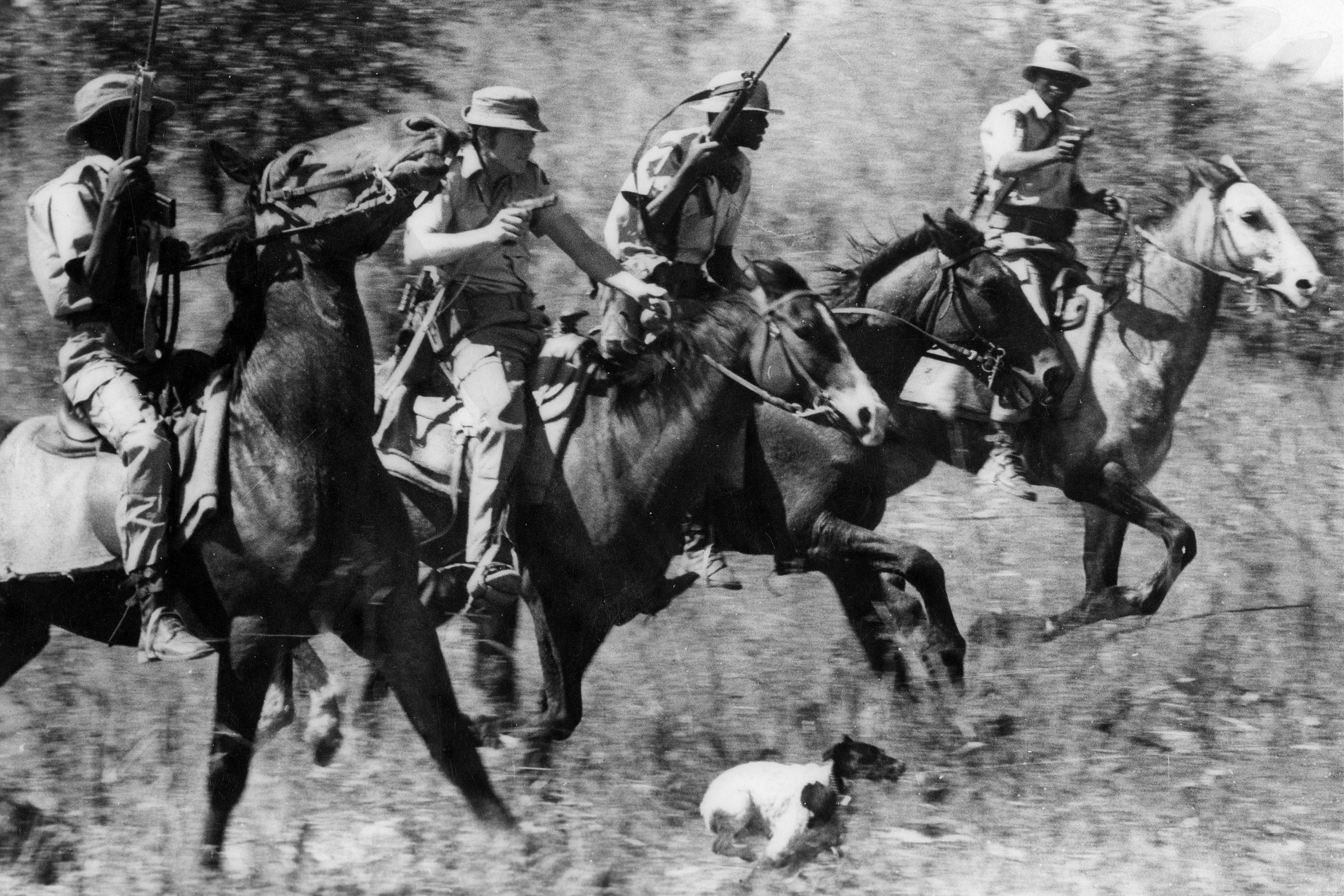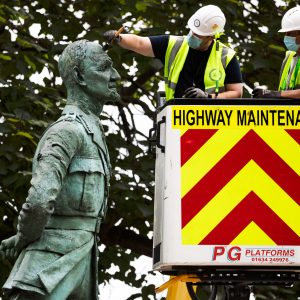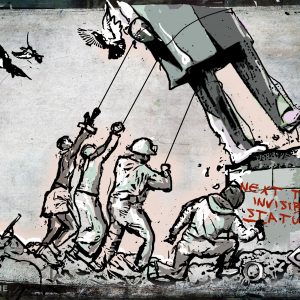Raising the spectre of pangas and shotguns
White people’s reaction to the killing of a horse at a racecourse in Port Elizabeth is a reflection of their inability to deal with their racist colonial past and with black people as equals.
Author:
30 September 2020

White folk and their animals. For many black South Africans, it is a strange yet fascinating relationship. I listened once as a white mother at my children’s school described how her dog was battling with “separation anxiety”. As a practising psychotherapist, I couldn’t help but feel intrigued that a canine could metabolise the traumas of its early years through regular visits to the pet behaviourist.
One wonders where we might be as a country if white people showed as much humanity towards black people as they do towards their pets. The recent outrage over the death of a horse in Port Elizabeth is a case in point. What appears to be a labour dispute between black workers and a white employer morphed rapidly into a racialised standoff where one white woman urged responsible citizens to show up at Fairview Racecourse with not handguns but shotguns. Another white woman confessed to having had “thoughts of flying over with a crop sprayer full of flammable liquid” and burning black protesters alive – all because, allegedly, “at least one horse had been slaughtered with pangas”.
The facts are hotly disputed, but the imagery of pangas and shotguns is not. Indeed, one can be forgiven for being less interested in how the horse died and the fate of its traumatised peers than in the linguistic repertoires employed by some white South Africans in this supposed “siege of terror”.
To begin with, the thing about shotguns and crop sprayers is that they have no specific target: their effects are indiscriminate. At a discursive level, they conjure the image of an undifferentiated, rampaging black horde that must be stopped (dead) in its tracks. Whereas the individuality of the dead horse and the distraught white owner is preserved, the individual humanity of disaffected black workers is not. And, of course, if as far as you’re concerned it’s not individual human beings with families that you’re dealing with, then resorting to the use of shotguns and crop sprayers – reserved for hunting animals and disinfecting plants – makes good sense.
Related article:
Such dehumanisation of the black subject is nothing new in settler-colonial societies such as South Africa. The French psychoanalyst Octave Mannoni once wrote of the colonial psyche that it was filled with the hatred of other human beings. When thousands of misanthropes set sail from Europe, their phantasy – that is, their unconscious fantasy – was to settle in unpeopled lands. And that is exactly what they found in the Americas, Africa and Asia: virgin territory, because the local peoples did not count as human. That is how Columbus managed to “discover” America despite the presence of at least 50 million indigenous souls, and that is how all manner of oppressions were legitimated – it was a “civilising mission”, after all – and perpetrated against the homogenous other.
Animals as racial intermediaries
So difficult was it for colonisers and, later, men of empire to relate to the peoples they subjugated that they needed the figure of a dog, the colonial dog, to function as racial intermediary. German shepherds, in particular, became renowned for the policing role they played in occupying military forces around the world, which included the Nazis – Hitler had a bitch named Blondi – and the Japanese, whose shepherds were mythologised via claims of outlandish wartime exploits.
Latterly, the Americans had their shepherds in their series of Middle Eastern misadventures, such as in Abu Ghraib and its torture chambers, for example. Fiercely loyal to their handlers, German shepherds would snarl, yap, bite and maim, enforcing the social order, doing the dirty work of their imperial masters. No black person in South Africa needs to have it explained to them how much white people love their dogs, and how afraid they are of those very same dogs.
The figure of the horse is no less evocative. In the collective mind, it too symbolises a beast of empire, marking the boundary line where black lives end and white lives begin. In South Africa, the richest event on the horse racing calendar, the Durban July, had a white winner for 116 consecutive years until Zulu rider S’manga Khumalo won it in 2013. The apartheid state made a point of excluding black South Africans from the horse racing scene, other than as grooms and punters. The diminutive white jockey would straddle the powerful animal like an army general surveying land soon to be taken, oblivious to the existence of the hapless black groom bringing up the rear, running along just trying to keep up.
Related article:
Such cringeworthy imagery suffices to remind one of the (in)famous statue outside the American Museum of Natural History in New York. It depicts an imperious-looking Theodore Roosevelt gazing into the distance from atop his steed of war, while the figures of an African and a Native American walk either side of the horse. Unsurprisingly, with racial tensions escalating steadily in the United States, a decision has now been made to take the statue down.
The obvious affection that many white South Africans have for their dogs and horses is not meant to suggest that black people do not share their enthusiasm. Jacob Zuma was dead wrong when he said that owning a dog “is not African”. There is a wealth of anthropological evidence attesting to the importance of animals in the lives of black people. The difference, however, is that for black people the role of those animals is not one of racial mediation.
Behind the fears of white people
For some white people, by contrast, it appears that dogs and horses are deployed as psychological props for keeping black people “in their place”. Unable to engage as equals with people of a darker hue, it is as if they were afflicted by a racial mind-blindness of sorts, making it impossible for them to read and respond to black people as one expects a normal human being would.
Perhaps this explains the outrage at the death of a lone horse in Port Elizabeth and the seeming lack of concern for black workers. Whether actual or perceived, an attack on a horse is the psychological equivalent of an attack on an adored racial intermediary, without which, for some white people, it may feel as though yet another brick from a social order long gone is giving way to existential collapse.
Related article:
There is one other matter, however, that deserves some comment and that is the terrifying image of the blood-soaked panga. White settlers always worried that, one day, “the natives” whom they treated “like family” would slaughter them in their beds, usually with pangas. But what would someone like Freud have said about the symbolism of the panga?
It is not difficult to hazard a guess. The incorrigible father of psychoanalysis would have interpreted the panga as a phallic symbol functioning in the white psyche as a placeholder for the sexual rapacity of “the natives”. Across centuries, the tired stereotype of black sexual prowess has provoked much anxiety in white people: the colonial masters confined themselves to a state of perpetual terror with their paranoid fantasies about threats to the sexual innocence of white women. Fears of miscegenation abounded as the black subject came to represent, in the words of Fanon, a “phobogenic object”, a stimulus to anxiety, which perhaps explains why, in their lynchings of black men in the American South, white supremacists deemed it necessary to castrate their victims too.
It is a common refrain in white circles in this country that black people can’t get over the past, that they remain haunted by the traumas of a colonial and apartheid past. But in this recent episode of white panic, with its colonial-era imaginings of pangas, shotguns and the barbaric black horde, one is justified in wondering just whose psyche, really, remains haunted by an unmetabolised past.



